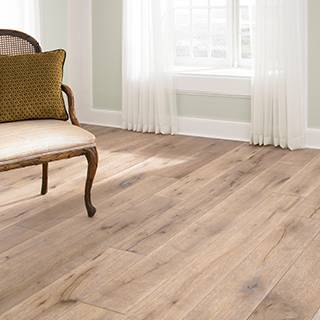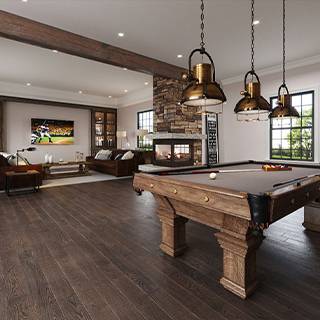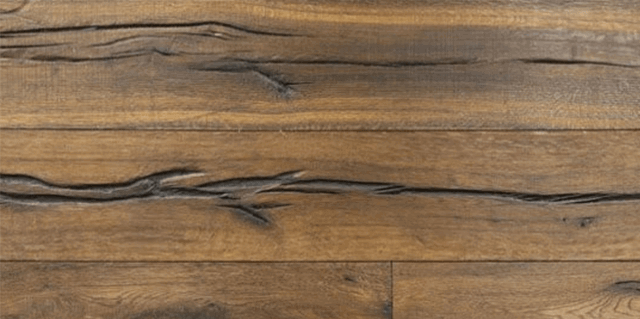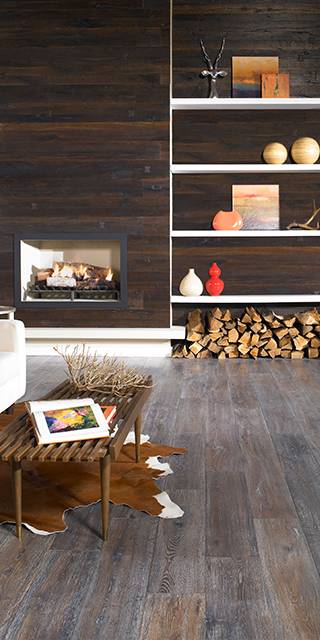A Practical Guide to Hardwood Flooring Grades
August 17, 2015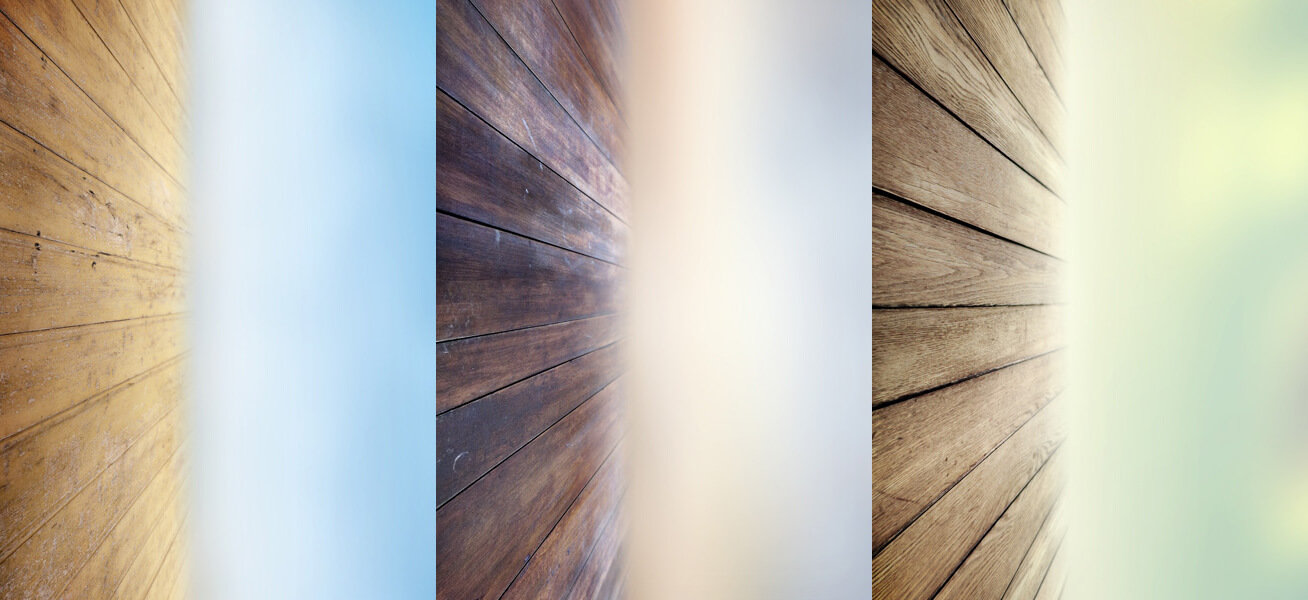

Among the many qualities that influence the appearance of any particular hardwood flooring is the grade of the wood. Almost all boards sold for hardwood flooring in the U.S. are graded according to standards originally laid out by the National Oak Flooring Manufacturers Association (NOFMA) to help create consistency in the quality of Oak flooring in the U.S. These standards are now used to grade virtually all hardwood flooring throughout the country and are promoted and upheld by the National Wood Flooring Association (NWFA).
While the NOFMA grading system relates closely to the guidelines set out for all hardwood lumber by the National Hardwood Lumber Association (NHLA), the NOFMA system gives more attention to the appearance or absence of certain characteristic marks than to other considerations weighed by the NHLA, which must grade wood for uses ranging from cabinetry to building frames. NOFMA grades, then, are largely an indicator of what the face of a board can be expected to look like, rather than an assessment of inherent quality, stability, hardness, or other factors.
Clear Grade
 This is the wood referred to by the NHLA as FAS (Firsts and Seconds). It is premium grade wood and, as its category name suggests, its face is pretty much free of character marks like knots and burls. The grain of Clear Grade boards will tend to be quite consistent, as will the color from board to board. Clear Grade boards are taken from the heartwood of a tree and create a very smooth, uniform look often desired when a clean, classic tone is the goal. Since boards that can be graded as Clear are somewhat rare, it is often easier to find engineered Clear Grade, as a single piece of clear lumber goes much further when sliced thin for engineered boards than it would as a solid floor board. For the same reason, Clear Grade wood will almost always cost more than other grades.
This is the wood referred to by the NHLA as FAS (Firsts and Seconds). It is premium grade wood and, as its category name suggests, its face is pretty much free of character marks like knots and burls. The grain of Clear Grade boards will tend to be quite consistent, as will the color from board to board. Clear Grade boards are taken from the heartwood of a tree and create a very smooth, uniform look often desired when a clean, classic tone is the goal. Since boards that can be graded as Clear are somewhat rare, it is often easier to find engineered Clear Grade, as a single piece of clear lumber goes much further when sliced thin for engineered boards than it would as a solid floor board. For the same reason, Clear Grade wood will almost always cost more than other grades.
Select Grade
 Like Clear Grade, Select Grade wood will show a fairly consistent face, largely free of “imperfections”. However, with Select Grade, which is cut from both heartwood and sapwood, you will find more color variation between and within the boards as well as subtle diversions in the grain pattern that start to display some of wood’s natural character. Though easier to mill than Clear Grade, Select Grade wood is still fairly sparse, generally accounting for no more than 15% of a given tree, so it tends to fall into the same cost category as Clear Grade, and, in fact, they are often bundled together.
Like Clear Grade, Select Grade wood will show a fairly consistent face, largely free of “imperfections”. However, with Select Grade, which is cut from both heartwood and sapwood, you will find more color variation between and within the boards as well as subtle diversions in the grain pattern that start to display some of wood’s natural character. Though easier to mill than Clear Grade, Select Grade wood is still fairly sparse, generally accounting for no more than 15% of a given tree, so it tends to fall into the same cost category as Clear Grade, and, in fact, they are often bundled together.
#1 Common Grade
 It is in the Common Grades that natural wood character is really allowed to shine. In #1 Common, you will see characteristics like swirls, knots, and streaks in a good number of the boards, though these will be limited in size and prominence. When you look at a #1 Common Grade floor, you know are reminded that you are looking at a natural, organic material. #1 Common is an excellent choice for those who wish their floors to be a centerpiece of the room. The Common Grades are also the most forgiving choice for high traffic areas or homes with pets or lively children, as dings and scratches are easily masked among the natural imperfections of the wood.
It is in the Common Grades that natural wood character is really allowed to shine. In #1 Common, you will see characteristics like swirls, knots, and streaks in a good number of the boards, though these will be limited in size and prominence. When you look at a #1 Common Grade floor, you know are reminded that you are looking at a natural, organic material. #1 Common is an excellent choice for those who wish their floors to be a centerpiece of the room. The Common Grades are also the most forgiving choice for high traffic areas or homes with pets or lively children, as dings and scratches are easily masked among the natural imperfections of the wood.
#2 Common Grade
 #2 Common is similar to #1, but with more boards displaying the characteristic marks of natural wood and greater color variation among the boards. #2Common, sometimes referred to as Rustic Grade, retains much of the organic, natural quality of the trees from which it comes. Depending on the species of wood, stark color variations and bold streaks, prominent knots and burls, and highly inconsistent grain patterns make #2 Common Grade floors a great choice when the natural, living look is what you seek. Hickory, a species known for its beautiful color variation is a star in #1 and #2 Common Grades.
#2 Common is similar to #1, but with more boards displaying the characteristic marks of natural wood and greater color variation among the boards. #2Common, sometimes referred to as Rustic Grade, retains much of the organic, natural quality of the trees from which it comes. Depending on the species of wood, stark color variations and bold streaks, prominent knots and burls, and highly inconsistent grain patterns make #2 Common Grade floors a great choice when the natural, living look is what you seek. Hickory, a species known for its beautiful color variation is a star in #1 and #2 Common Grades.
Cabin Grade
 Cabin Grade wood is just what it sounds like. These boards are sort of like a second string. While they have all the durability, stability, quality of any other board used for flooring, their imperfections tend to dominate their face, displaying large streaks, deep knots and burls, wormholes, and even marks made during the milling process. Cabin grade offers no consistency when it comes to color or grain pattern, but it does offer a rustic look that supersedes even that of “Rustic Grade” #2 Common. Cabin Grade flooring is popular for spaces such as, well, cabins, but also playrooms, workshops, and other areas where the floors might be subject to much abuse. Cabin Grade is, as might be expected, substantially cheaper than other grades, but bundles also are likely to include a higher number of boards that you will simply not want to use. It always a good idea when installing Cabin Grade to lay out the boards as you intend to use them, as this allows you to control the aesthetic of these highly varied boards at least a little.
Cabin Grade wood is just what it sounds like. These boards are sort of like a second string. While they have all the durability, stability, quality of any other board used for flooring, their imperfections tend to dominate their face, displaying large streaks, deep knots and burls, wormholes, and even marks made during the milling process. Cabin grade offers no consistency when it comes to color or grain pattern, but it does offer a rustic look that supersedes even that of “Rustic Grade” #2 Common. Cabin Grade flooring is popular for spaces such as, well, cabins, but also playrooms, workshops, and other areas where the floors might be subject to much abuse. Cabin Grade is, as might be expected, substantially cheaper than other grades, but bundles also are likely to include a higher number of boards that you will simply not want to use. It always a good idea when installing Cabin Grade to lay out the boards as you intend to use them, as this allows you to control the aesthetic of these highly varied boards at least a little.
Character Marks
Wondering what we mean when we say “character marks”? These are the naturally occurring features that give wood some of its character. Here are a few of the most common:
Knots
 Knots are the dense, round spots that form in wood at the base of a branch or twig. In hardwood flooring, with exception of Cabin Grade, generally only “Sound” knots are permitted, meaning that, while the grain is interrupted by the knot, the board remains smooth and no wood is actually missing from the area.
Knots are the dense, round spots that form in wood at the base of a branch or twig. In hardwood flooring, with exception of Cabin Grade, generally only “Sound” knots are permitted, meaning that, while the grain is interrupted by the knot, the board remains smooth and no wood is actually missing from the area.
Streaks
 Streaks are generally cause by mineral deposits within a tree’s rings, though Cherry wood also sometimes displays gum streaks, an area of wood darkened by the tree’s own sap. Streaks are just what they sound like – long thin areas of the wood that are a different color from the rest due to the presence of certain minerals.
Streaks are generally cause by mineral deposits within a tree’s rings, though Cherry wood also sometimes displays gum streaks, an area of wood darkened by the tree’s own sap. Streaks are just what they sound like – long thin areas of the wood that are a different color from the rest due to the presence of certain minerals.
Wormholes
 As the name suggest, these are small imperfections in the face of a board caused by worms making their way through the tree while it was alive. Generally these are no more than ¼ inch wide, though sometimes larger grubs can create virtual trenches, known as grub holes. That latter, however, are no permitted in flooring grade wood, with the occasional exception of Cabin Grade.
As the name suggest, these are small imperfections in the face of a board caused by worms making their way through the tree while it was alive. Generally these are no more than ¼ inch wide, though sometimes larger grubs can create virtual trenches, known as grub holes. That latter, however, are no permitted in flooring grade wood, with the occasional exception of Cabin Grade.
Oak Grade sample photos from NWFA website
Wood not photo By F pkalac [CC BY-SA 3.0], via Wikimedia Commons


